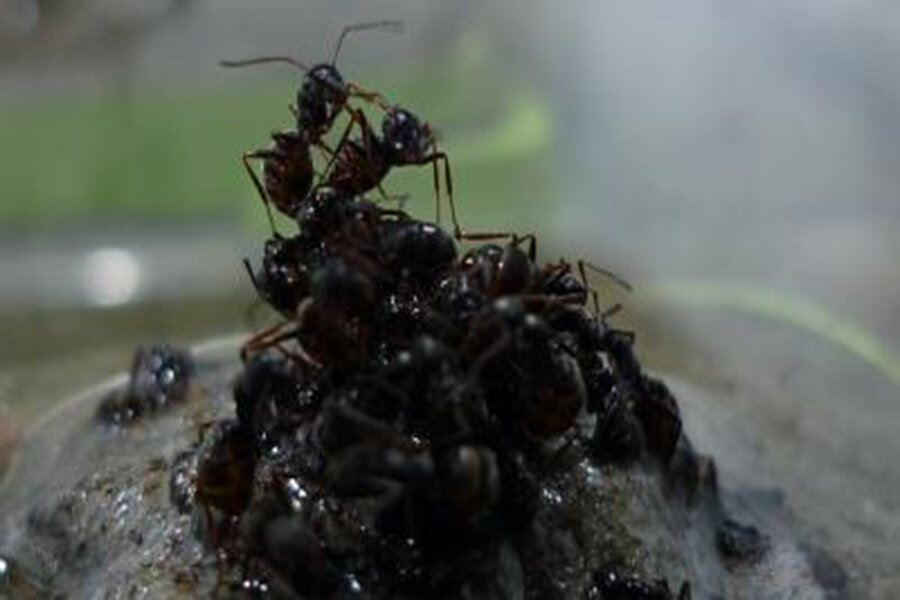Apparently, ants build rafts. Out of their babies.
Loading...
For ants, it's all about protecting their queen.
During floods, ants exhibit their remarkable collective behavior by linking together physically to build raft-like structures. Worker ants protect the queen by placing her in the center of the raft. The baby ants, known collectively as "brood," occupy the very bottom of the raft.
"Larvae and pupae (with and without cocoons) were significantly more buoyant than workers," notes "Ant Brood Function as Life Preservers during Floods," a paper published by researchers from the University of Lausanne, Switzerland, this week in the journal PLOS ONE.
To carry out the study, the researchers collected ants (Formica selysi) abundant in the flood plains of Switzerland.
The ant population was then divided into different combinations of worker ants, queens, and broods (containing developing larvae and pupae). Rafting was induced by placing the ants on a platform and slowly raising the water level in the laboratory, the scientists observed the positions of the ants.
"Researchers found that the worker ants and brood were extremely resistant to submersion," according to a press release. "The workers protected the most vulnerable and valuable nest mate, the queen, by placing her in the center of the raft, and the worker ants used the buoyancy of the brood at the base and recovery ability of workers to create a raft and minimize ant injury or death."
Broods are more buoyant than adult workers, which essentially means that they can serve as a better floatation device, according to the paper. Also, a raft supported by the brood had a better survival rate.
The press release quotes the University of Lausanne's Jessica Purcell, an author of the paper: "We expected that individuals submerged on the base of the raft would face the highest cost, so we were astonished to see the ants systematically place the youngest colony members in that positions. Further experiments revealed that the brood are the most buoyant members of the society and that rafting does not decrease their survival; thus, this configuration benefits the group at minimal cost."
In addition to high survival rates, "workers from rafts with brood recover more quickly, on average, than workers from rafts without brood. This would likely be highly advantageous in the natural environment, where groups need to find cover quickly after reaching shore," researchers noted in their paper.
The brood could also help in keeping the nest intact, researchers said.








